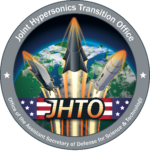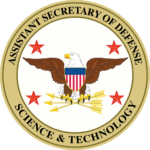Question #1: I am interested in the being the PI on a proposal for the recent call, specifically responding to: “2.6 TECHNOLOGY AREA 6: NEXT GENERATION TECHNOLOGIES, 4) Hypersonic Air Breathing Propulsion (PROP), a) solid fuel scramjets.” My university has the capability to handle export controlled (ITAR) data along with classified data, though I personally do not have a clearance.
However, I would like to partner with University X on this proposal, and they cannot accept research dollars that are associated with ITAR (or higher) projects. I believe that they were originally involved with UCAH when it was being formed, though I do not see them listed as a member university on the web page. Either as a Co-I, or as a sub, is it still possible to partner with them on this proposal? If awarded, any ITAR information would remain at the lead university, and only basic research (not export controlled) would be performed at University X.
Answer #1: All institutions participating on the proposal need to be members to be eligible. Institutional membership can be found on the UCAH website.
Question #2: For the current UCAH call, in the internal TEES WP submission portal, it says,
“Each University Consortium Member is limited to leading three WPs. Each WP is limited to a maximum of four Principal Investigators (PIs). This does not preclude teaming between PIs from different University Consortium Members, if no university exceeds the submission limit on which it is the lead.”
Just confirming this means the number of PIs for each partner institution cannot exceed four (04). In other words, the following is an acceptable situation on a particular WP, can you please confirm?
Lead University: 03 PIs (PI & 2 co-PIs)
Institute A: One co-PI
Institute B: One co-PI
Institute C: One co-PI
Answer #2: The requirements are as follows: (1) No university can submit more than three WPs. (2) No single WP can have more than four PIs total across all participating universities. (3) A faculty member can be a PI or co-PI on all three WPs from his home university (usually not the case). And (4), a faculty member can be a co-PI on as many WPs as they want as a partner university (not the lead).
Question #3: Which wavelength ranges are of interest for the window/radome TPS: Visible, Infrared, radio, etc?
Answer #3: IR/RF is the broad spectrum of interest. Specific frequency ranges depend on application and will be discussed upon award.
Question #4: Will the superior fracture toughness of a silicon nitride fiber reinforced silicon nitride composite be of interest for radomes in this call?
Answer #4: All valid technical solutions will be considered. Survivability and Manufacturability are areas of interest.
Question #5: Will a material with superior thermal shock resistance and/or lower manufacturing cost be a sufficient selling point over the currently used polycrystalline alumina for infrared windows?
Answer #5: All valid technical solutions will be considered – time and cost improvements are welcome.
Question #6: I am interested in applying for this call with my colleagues. I am a French citizen and have a green card. Does it make me eligible for this call?
Answer #6: Participation in the consortium is limited to US citizens, with case-by-case approval for citizens from the United Kingdom, Australia, New Zealand, and Canada.
Questions #7 through #18 all pertain to 2.6 Technology Area 6: Next Generation Technologies 5) Systems Engineering, Design and Analysis
Question #7: Innovative vehicle concepts can be identified via a consistent comparison between (a) airbreather, and (b) boost-glide?
Answer #7: All valid technical solutions will be considered.
Question #8: Innovative vehicle concepts can target a BENCHMARK design employing reusability, horizontal takeoff and landing, single stage to cruise, combined-cycle propulsion, and Mach 10 for the airbreather?
Answer #8: All valid technical solutions will be considered.
Question #9: Innovative vehicle concepts can also reach out to a benchmark SSTO (single-stage to orbit)?
Answer #9: All valid technical solutions will be considered.
Question #10: Innovative vehicle concepts study prefers a notional mission (speed, payload, range/duration) from the organizer?
Answer #10: All valid technical solutions will be considered.
Question #11: Innovative vehicle concepts can compare vehicle cross-sections ranging from (a) wing-body, (b) blended-body, and (c) all-body?
Answer #11: All valid technical solutions will be considered.
Question #12: Innovative vehicle concepts can evaluate waverider vs no-waverider for (a) airbreather, and (b) boost-glide?
Answer #12: All valid technical solutions will be considered.
Question #13: Innovative vehicle concepts can evaluate low-boom vs high-boom (a) airbreather, and (b) boost-glide?
Answer #13: All valid technical solutions will be considered.
Question #14: Innovative vehicle concepts are considering technologies for medium-term (20 years) to longer-term engagements (30-40 years)?
Answer #14: All valid technical solutions will be considered.
Question #15: Innovative vehicle concepts considering military (DF-17 competition) and civilian missions?
Answer #15: All valid technical solutions will be considered.
Question #16: Innovative vehicle concept deliverables are of (a) educational and (b) research focus generated via a report? The underlying computer tools are not part of the deliverable package?
Answer #16: All valid technical solutions will be considered.
Question #17: Innovative vehicle concepts methodology can be first verified & validated along flying aircraft (X-43A and X-51) before being applied to generate innovative vehicle concepts?
Answer #17: All valid technical solutions will be considered.
Question #18: Is there an interpretation or definition related to CONOPS & vehicle design for coordinated hypersonic engagement and teaming?
Answer #18: All valid technical solutions will be considered.
Question #19: Will heat exchangers in the propulsion flow path be considered?
Answer #19: All valid technical solutions will be considered.
Question #20: Will solutions for ramjet, scramjet, and high-Mach turbine engine platforms all be considered equally?
Answer #20: All valid technical solutions will be considered.
Question #21: Is the overall sizing shown in Figure 1 relevant for non-aeroshell components?
Answer #21: The sizing in Figure 1 is representative of an unclassified vehicle and may be used for proposal purposes. Modifications to sizing may be proposed based on application of proposal upon selection.
Question #22: Are universities the only acceptable foreign participants, or would it be possible to receive a foreign waiver for a UK industry partner?
Answer #22: UCAH Affiliate Membership is limited to foreign universities.
Question #23: Is partnering with a university a requirement?
Answer #23: Consortium member universities must lead on all proposals. Affiliate members may partner with the university members.
Question #24: Do you have any recommendations for university partners?
Answer #24: A list of consortium universities can be found on the UCAH website.
Question #25: Upon successful completion of the program, is follow-on funding available for technology areas 1 and 6?
Answer #25: Follow-on funding is not available for this proposal. JHTO will assess each proposal toward the end of the research for possible transition.
Questions #26 through #28 all pertain to Tech Area 4
Question #26: How robust and in-depth can we assume the automated mission planner and it’s product(s) to be that the human must trust? For example, some legacy mission planning system are simply digitized route plotters and performance calculators; others provide constraints on the route or planned performance of the aircraft to prevent the crew from demanding more from the aircraft than is possible given the aircraft design or environment conditions; others can calculate an optimized route between launch and destination for fuel efficiency or time-on-target requirements. Can we assume the “automated hypersonic mission planner” is at least this capable and advanced?
Answer #26: Since UCAH projects are looking at future, leap ahead technologies, you can assume that the mission planning and trajectory calculating tools are sophisticated and capable of calculating all of the above. However, it is important to consider that there may be uncertainties in the vehicle performance, environment, target location, etc. that would lower the overall confidence in the trajectory and mission planning tools.
Question #27: Moreover, can we assume the automated planner will calculate, or have transparent metrics available, related to the mission risk parameters, to help communicate the rationale for the route planned?
Answer #27: You can assume that the automated mission planner will be able to generate some metrics (just be explicit about what you are assuming), but consider that the inputs to the mission planner will also contain some uncertainties as well. The important thing to quantify is the relationship between the uncertainty in your input information to the mission planner with the confidence in the resulting planning.
Question #28: Lastly, can we assume (at least for this phase of the research) that the “automated hypersonic mission planner” will operate reliably and accurately (no fault or failure cases)?
Answer #28: Yes. You can assume that the mission planner operates without fault, but that it will be using uncertain data inputs.


